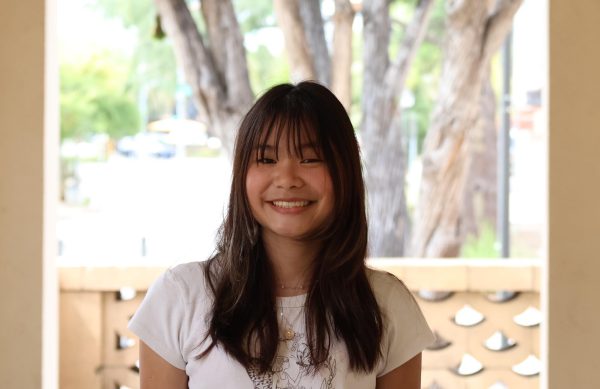Driving down U.S. Highway 101, Stacy, an unhoused resident of Palo Alto who asked to be identified only by her first name due to privacy concerns, was hit by a speeding drunk driver in 2018. Due to the injuries she sustained, she was unable to continue working. Just six months later, she was evicted, unable to pay her rent.
Since then, she has been living in motels, shelters and her Subaru for the past five years. On top of that, she faced a 10-month battle with cancer in the middle of the COVID-19 pandemic. Stacy is now set to get housing by the end of the year, but her story is one of many in Santa Clara County.
According to the Applied Survey Research Point-in-Time Report, in 2022, 10,028 people were unhoused in Santa Clara County, the fourth highest unhoused population in the nation, and 77% of those were unsheltered in 2022. Of the unhoused individuals in Santa Clara County, 1,155 were under the age of 24, including 56 people under the age of 18. The number of unhoused individuals in Santa Clara County has increased by 42% since 2009.
Root Causes
With Santa Clara County’s median income being nearly $70,000 above the national median, Brian Greenberg, Vice President of LifeMoves — a nonprofit organization that provides emergency interim housing for unhoused people in the South Bay — said rent prices are triple the national average.
Greenberg said the hiked rent prices result in a disproportionately large unhoused population.
“Rent in Palo Alto, Menlo Park and Mountain View are over $3 a foot per month,” Greenberg said. “In many states, rent hasn’t reached $1 a foot. We don’t have any more mental illness in California than they do in Texas, but we have an outsized homeless problem.”
While housing is a primary contributor to homelessness, Derek Christopher, a postdoctoral scholar at the Stanford Institute for Economic Policy Research, said mental health issues are also associated with homelessness for both chronically and temporarily unhoused people.
“It is clear that mental health is at play in many, if not most, instances of homelessness,” Christopher said. “However, it remains unclear the extent to which mental illness leads to homelessness, homelessness leads to mental illness, or both.”
Greenberg also said causes for homelessness can start in adolescence, especially in low-income households, because a smaller percentage of unhoused adolescents pursue post-secondary education. A 2023 study from Brookings found that about 89% of students from high-income families go to college compared to 51% of students from low-income families.
“Poor kids are just as smart as middle class kids, but many don’t go to college, and if they go to college, many drop out,” Greenberg said. “It’s so daunting for lower income families to think about post-secondary education. Many of our kids have never been on a college campus.”
According to Donald Barr, the board secretary of Peninsula Healthcare Connection, a clinic that provides health services for unhoused people, many of the unhoused adolescents in Palo Alto attend a high school within 50 miles of the region, and some do pursue post-secondary education.
“Nearly half of the homeless adults (in Palo Alto) grew up here as kids, and that’s often because they dropped out of the educational system after high school or maybe after a couple of years of college,” Barr said. “The late teens and early 20s is when mental illnesses like bipolar disorder or schizophrenia start to take effect.”
Stacy said for those who move to Palo Alto from other cities, it is difficult to then move back.
“I come from a very, very small rural community, so if I were to go home, somebody has to retire or pass away in order for a good job to come along,” Stacy said. “Once people get (a job), they stay, whether they’re happy or not. Because once you’re going to move, that’s your medical insurance. That’s your retirement. That’s your paycheck. People come here for a better job, and then something falls apart, and you realize that your savings don’t stretch the way it did.”
Public Efforts
Barr said providing housing and permanent services for unhoused people is actually more affordable than taking no action at all.
“Putting chronically homeless adults into housing, paying the rent for them and assigning them a case manager turns out to be cheaper than having them on the streets,” Barr said. “Otherwise, they end up in an ambulance with calls to the emergency room, they end up in jail or in a detox center, so it’s actually cheaper for communities to provide permanent housing for the homeless.”
There are multiple services within Palo Alto to support the city’s unhoused population, notably the Opportunity Center, located at 33 Encina Ave. in downtown Palo Alto. Barr, who founded the local nonprofit that helped build the center, the Community Working Group, said it provides three levels of service.
“There are 89 permanent supportive apartments with a case manager that works with the clients to help them stay in the housing,” Barr said. “On the ground floor, there’s a Services Center where (unhoused individuals) can get some food, check their email on a computer, take a shower or talk to a case manager about trying to move into housing. And there’s a nonprofit medical clinic that has received federal certification and provides health care to the homeless.”
Through the Opportunity Center, residents have access to Peninsula Healthcare Connection. David Chang, who oversees Stanford Health Care physicians at PHC, said patients range from those living in permanent supportive housing to those living on the street, with or without insurance. Chang said residents can also get medical examinations that are legally required for jobs or school, regardless of their living situation.
“If somebody comes in and they don’t have any other doctors they can see, and they need a school physical or a tuberculosis test or some immunizations, we will try to do that because we really want people to be in school or society,” Chang said. “We do see patients who need mental health (treatment). We see patients who have chemical dependency issues or substance use disorder issues.”
And Greenberg said health services are crucial for unhoused individuals because they are more susceptible to mental illness, causing individuals to stay unhoused for longer periods of time if not addressed.
“Once you’re living on the streets for a year or two, you develop trauma,” Greenberg said. “It’s debilitating to sleep outside, so you can develop drug problems. If your depression or anxiety wasn’t treated as a kid, once things are untreated for many years, they become entrenched in the human condition.”
But Chang said some chronic health issues cannot be solved without permanent housing.
“A lot of times we’ll see a patient who has some kind of health issue, like back pain or poorly controlled diabetes, but the reason they have these things is because they’re sleeping on the street,” Chang said. “They don’t have a refrigerator to put their medications in, so we very quickly pivot to connecting (them) with case managers who work on housing.”
With the goal of shifting residents into permanent housing, Greenberg said LifeMoves’s case managers create individualized case plans after an assessment of each client.
“It might concern getting involved in psychiatric services or getting into therapy that might involve drug treatment services,” Greenberg said. “It might involve budgeting classes, legal assistance, linkage to employment or you might be disabled and unable to work. We try to individualize as much as we can.”
Hotel de Zink, a LifeMoves housing program hosted by Palo Alto churches each month, relies on volunteers from the local congregations to prepare and provide food and shelter. It primarily serves single adults and is accessible from the Opportunity Center.
Sandy Wilbourn, who organized the All Saints Church Hotel de Zink program in October, said Hotel de Zink is an atypical shelter that provides for the transiently unhoused population.
“The program houses 15 to 20 people a year, but there are lots of people coming in and out of the program because they’re in some kind of transitional state between homelessness and being housed,” Wilbourn said. “It’s great to have a place that’s not the standard kind of shelter, where you can get an evening meal and a place to sleep that’s quiet.”
Reverend Dr. Eileen Altman, the associate pastor at First Congregational Church of Palo Alto said Hotel de Zink also provides benefits for members of her congregation who are not unhoused. FCCPA hosted Hotel de Zink in March.
“When folks in the church talk with Hotel de Zink clientele, they realize the complexities of their stories,” Altman said. “One of the things that is meaningful is recognizing the realities of what it’s like to struggle financially.”
Another smaller community initiative focused on helping the unhoused is the Safe Parking Program, which is also offered at Palo Alto churches. The program allows churches to open up to four parking spots for unhoused individuals with passenger vehicles, where they can sleep at night and use the church’s sanitary facilities for as long as needed. Since its debut in 2020, the program has served over 80 individuals.
Despite its positive results, Christopher Kan, founder and administrator of the Safe Parking program, said gaining approval for the program was difficult.
“We ran an entire political campaign just to get four cars in our parking lot,” Kan said. “We had personal meetings with basically every single city council member. We talked with almost any community leader you could frankly imagine within the borders of Palo Alto. We talked to almost every faith community, and we talked with all kinds of political organizing groups. But we’re bending our world towards justice, and sometimes it takes a lot of effort to move it very, very little.”
Kan also said during the push for the program’s approval, his team faced opposition in public.
“Our members were being accosted in the grocery store and being asked to explain, ‘Why are you putting my children in danger? Why are you going to bring rapists to my neighborhood?’” Kan said. “(We) dealt with that at Trader Joe’s, at school pickup, at soccer games. Literally all over.”
Despite the challenges, Kan said he is proud of his team’s work.
“We’ve helped support other churches trying to start similar programs after us, and none of them have encountered the same problems that we did,” Kan said. “Part of it is because we helped not only city officials but also people in Palo Alto think about, ‘What does it mean to be a caring community?’”
Volunteers for Hotel de Zink do not just come from the adult population, though.
Lisa Bertelson-Kivett, who started the GIVES program at Addison Elementary School in 2019 and recently expanded to Greene Middle School, said GIVES gives PAUSD families the opportunity to provide a warm meal to an unhoused individual for a night at Hotel de Zink.
Bertelson-Kivett said the program allows adolescents to interact with those they wouldn’t normally meet.
“We can talk about homelessness and hunger, but for many kids, it is still somewhat removed from their everyday lives,” Bertelson-Kivett said. “Greene GIVES is all about teaching by doing. We’re building community awareness and a service culture by rolling up our collective shirtsleeves and tackling these problems. And by engaging directly, we demonstrate to our kids that they can have a positive impact on their city.”
Lauren Williams, a Greene parent who volunteered to prepare and serve food at Hotel de Zink through the GIVES program, said she wanted her son to volunteer with her to pass community service values onto her children.
“When this became an opportunity for our family, it was a no brainer (to) do this,” Williams said. “This is a great program that focuses on people who are going through instability with housing and food, so it’s a great program to introduce my kids to that area of service.”
Community Efforts
Despite the efforts to help unhoused individuals, Stacy said the city and county still need to reform current practices.
“The system is broken,” Stacy said. “(The county) gives you an assessment test, and they ask you all these questions. And if you don’t have serious problems, like if you’re not disabled or an addict, getting help with housing is impossible. How can you say that one individual deserves housing more than the other?”
Stacy also said homelessness is an issue many politicians choose to ignore.
“Silicon Valley, in the way they look at the homeless, just wants to sweep this under the rug and pretend it doesn’t exist,” Stacy said.
Greenberg agrees and said Palo Alto’s affluence does not excuse both politicians and residents from treating the unhoused population with the same respect that the others receive.
“Open up your eyes to how (homelessness) came to be and that we’re living with this and almost thinking nothing of it,” Greenberg said. “Because when you’re on University Avenue, at night when the restaurants are closing, it’s only homeless people out.”
Chang also said a majority of the unhoused population of Palo Alto emphasized that being treated as inferior was the worst part of being unhoused.
“The thing that bothers (the homeless) the most is people will not look at them, or they’ll think they are less than the others in the area,” Chang said. “A lot of the people we work with are highly intelligent and highly educated local people.”
Vice Mayor Greer Stone said Palo Alto citizens should address the issue of homelessness by making efforts to acknowledge the unhoused since they are still members of the community.
“It shouldn’t matter if you live in a $5 million mansion in Palo Alto or live right in your car on the corner of the street,” Stone said. “The government can do everything we can to try to address the problem, but it really is a greater societal issue, and we have to treat everybody with respect and human decency.”
But Stacy said the biggest issue was the harassment she faced from certain police officers, specifically from San Jose and Sunnyvale.
“You would think that (the police) would be there to just protect us, but they tend to prey on us,” Stacy said. “They’ll come tapping on your car demanding to see your driver’s license and to run your background 20 days out of 30. And they’re just doing it just to mess with you. I don’t have a criminal background. I have a job. There’s no reason for them to be picking on me.”
Jennifer Garnett, the Sunnyvale Police Department’s Communication Officer, responded to the previous claim about their officers’ treatment of homeless residents by stating the city has been taking action to support the unhoused community.
“We partner with and provide funds to several nonprofit agencies,” Garnett said. “Our public safety officers also check on the welfare of unhoused residents. They explain available services, such as temporary shelter, and they have on occasion given out basic supplies like blankets and toiletries.”
Ultimately, Kan said empathy is the key to helping unhoused individuals.
“Most (unhoused) people had a medical bill. They crashed their car. They had something happen that they weren’t prepared for,” Kan said. “These people go to Paly (and) Stanford. They work at the places your parents work. They shop in the stores that you shop at. They drink the same bubble tea that you do. They’re just people that need some help because all of us need help sometimes.”






